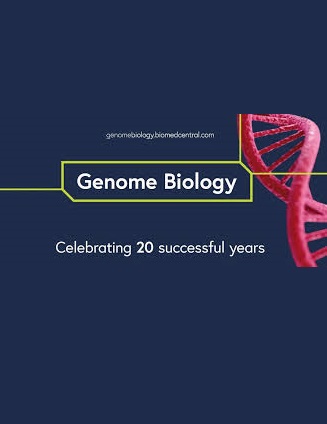基于甲基化的无浆细胞DNA细胞型反褶积方法的系统评价
IF 10.1
1区 生物学
Q1 BIOTECHNOLOGY & APPLIED MICROBIOLOGY
引用次数: 0
摘要
血浆无细胞DNA (cfDNA)来源于各种组织的细胞死亡。通过细胞类型反褶积研究cfDNA的组织起源,我们可以检测在疾病进展期间或对治疗的反应中发生的组织稳态变化。因此,cfDNA已成为一种有价值的无创生物标志物,用于疾病检测和治疗监测。尽管有许多基于甲基化的cfDNA细胞型反褶积方法,但尚未对这些方法进行全面和系统的评估。在本研究中,我们对五种方法进行了基准测试:MethAtlas, cfNOMe toolkit, CelFiE, CelFEER和UXM。利用来自35种人类细胞类型的深度全基因组亚硫酸氢盐测序数据,我们生成了具有真实细胞类型比例的硅片cfDNA样本,以评估五种方法在多种情况下的反卷积性能。研究结果表明,参考标记选择、测序深度和参考图谱完整性等因素共同影响了反卷积性能。值得注意的是,缺少标记或细胞类型的不完整参考会导致次优结果。我们观察到不同条件下不同方法的性能差异,强调了定制cfDNA反褶积分析的重要性。为了提高我们研究结果的临床相关性,我们使用真实世界的数据集进一步评估每种方法在潜在临床应用中的表现。基于基准结果,我们提出了基于cfDNA数据的测序深度和参考图谱的完整性来选择合适方法的一般准则,以最大限度地提高基于甲基化的cfDNA细胞类型反褶积的性能。本文章由计算机程序翻译,如有差异,请以英文原文为准。
Systematic evaluation of methylation-based cell type deconvolution methods for plasma cell-free DNA
Plasma cell-free DNA (cfDNA) is derived from cellular death in various tissues. Investigating the tissue origin of cfDNA through cell type deconvolution, we can detect changes in tissue homeostasis that occur during disease progression or in response to treatment. Consequently, cfDNA has emerged as a valuable noninvasive biomarker for disease detection and treatment monitoring. Although there are many methylation-based methods for cfDNA cell type deconvolution, a comprehensive and systematic evaluation of these methods has yet to be conducted. In this study, we benchmark five methods: MethAtlas, cfNOMe toolkit, CelFiE, CelFEER, and UXM. Utilizing deep whole-genome bisulfite sequencing data from 35 human cell types, we generate in silico cfDNA samples with ground truth cell type proportions to assess the deconvolution performance of the five methods under multiple scenarios. Our findings indicate that multiple factors, including reference marker selection, sequencing depth, and reference atlas completeness, jointly influence the deconvolution performance. Notably, an incomplete reference with missing markers or cell types leads to suboptimal results. We observe performance differences among methods under varying conditions, underscoring the importance of tailoring cfDNA deconvolution analyses. To increase the clinical relevance of our findings, we further evaluate each method’s performance in potential clinical applications using real-world datasets. Based on the benchmark results, we propose general guidelines to choose the suitable methods based on sequencing depth of the cfDNA data and completeness of the reference atlas to maximize the performance of methylation-based cfDNA cell type deconvolution.
求助全文
通过发布文献求助,成功后即可免费获取论文全文。
去求助
来源期刊

Genome Biology
Biochemistry, Genetics and Molecular Biology-Genetics
CiteScore
21.00
自引率
3.30%
发文量
241
审稿时长
2 months
期刊介绍:
Genome Biology stands as a premier platform for exceptional research across all domains of biology and biomedicine, explored through a genomic and post-genomic lens.
With an impressive impact factor of 12.3 (2022),* the journal secures its position as the 3rd-ranked research journal in the Genetics and Heredity category and the 2nd-ranked research journal in the Biotechnology and Applied Microbiology category by Thomson Reuters. Notably, Genome Biology holds the distinction of being the highest-ranked open-access journal in this category.
Our dedicated team of highly trained in-house Editors collaborates closely with our esteemed Editorial Board of international experts, ensuring the journal remains on the forefront of scientific advances and community standards. Regular engagement with researchers at conferences and institute visits underscores our commitment to staying abreast of the latest developments in the field.
 求助内容:
求助内容: 应助结果提醒方式:
应助结果提醒方式:


